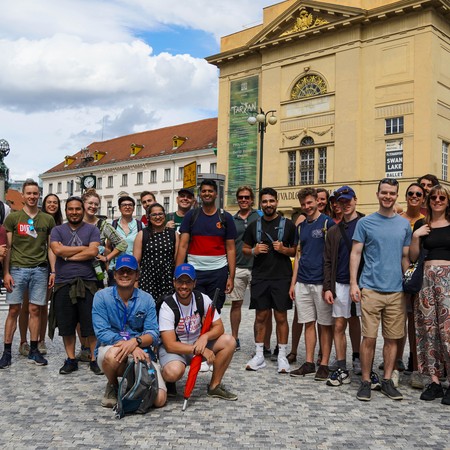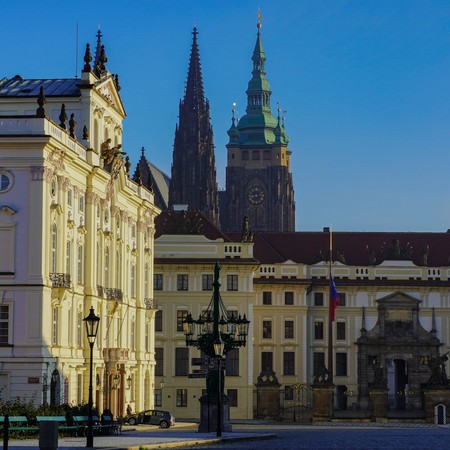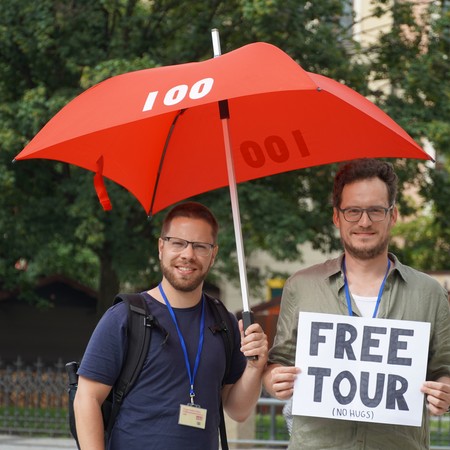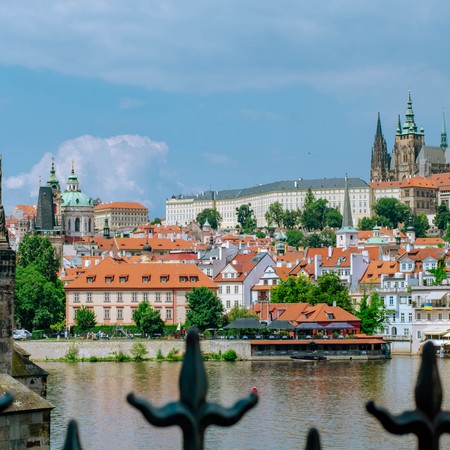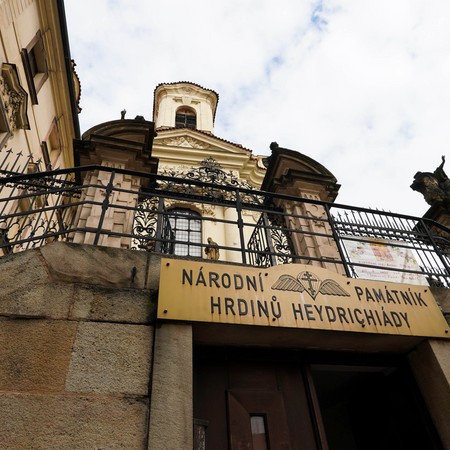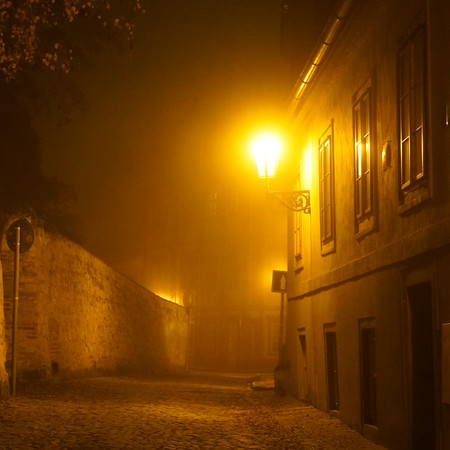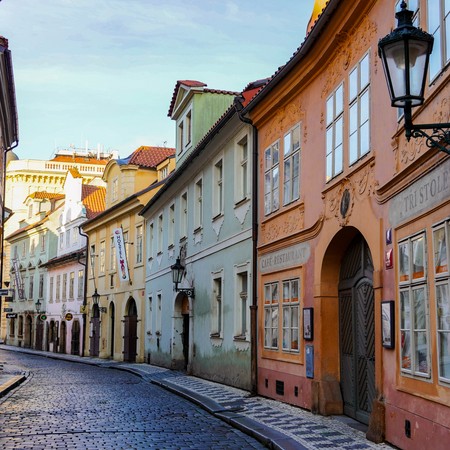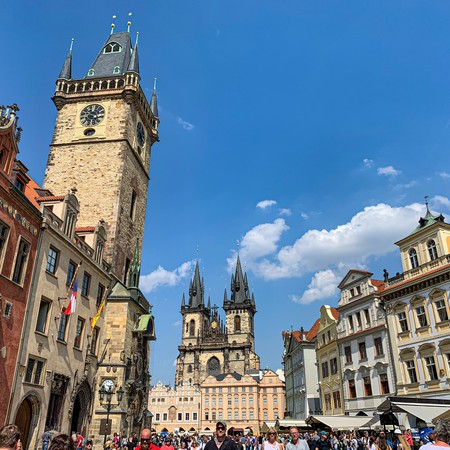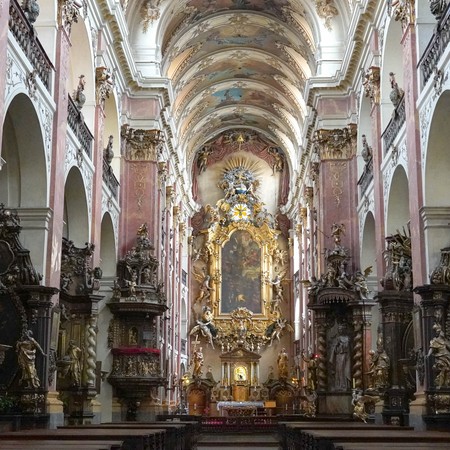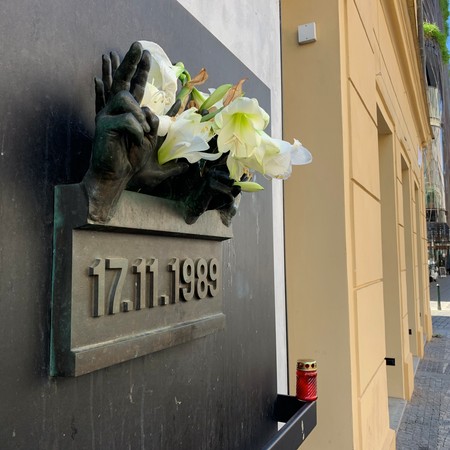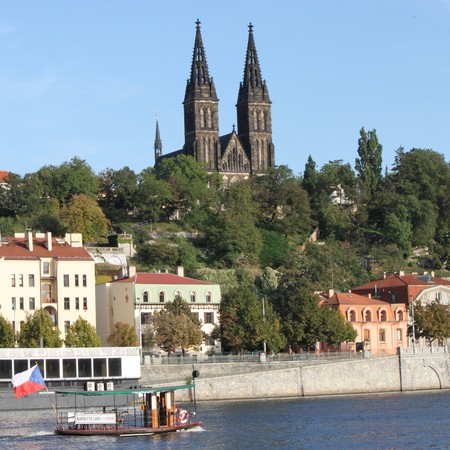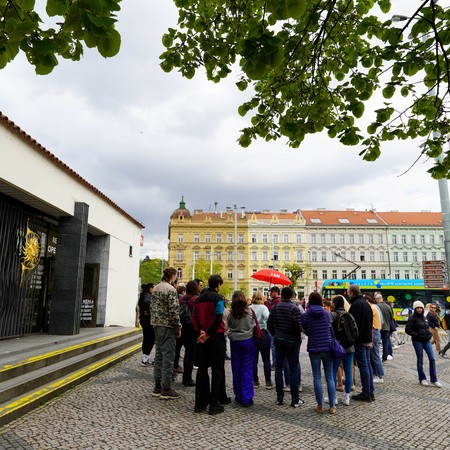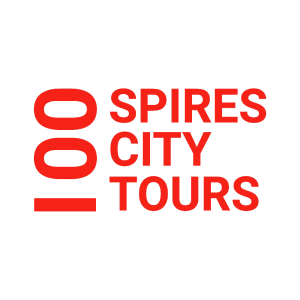Tyn Church Prague - Tomb of Tycho Brahe
The Church of Our Lady Before Tyn (or just Tyn Church for short) is the most iconic ecclesiastical structure of the Old Town Square, Prague. Tyn's exterior is gothic, and the church was started to be built in 1365 when Prague was ruled by king Charles IV. The construction lasted till 1511 when the southern tower was finally complete. There were two big fires that destroyed a significant part of the roof, so it had to be reconstructed in Baroque style. Before 4 Prague towns were united in 1784, Tyn Church was the most important shrine of the Old Town.
Meaning of the word Tyn
- Tyn is a merchants' yard and medieval customs of Prague located behind the church. It was also called Ungelt, which means "tariff" - ein Geld. Tyn or Ungelt was the place where foreign merchants were required to stay and where they had to weigh and tax all of their goods. Merchants could live safely in Tyn as it was, basically, a fortress inside of the Old Town. Tyn is also known as "Vesely Dvur" or "Happy Yard" in Czech since there was plenty of entertainment for the rich merchants to enjoy.
Tycho Brahe and his tomb in the Tyn Church, Prague
Tycho Brahe was born in 1546 in Knudstrup, Denmark. Despite his heavy academic background, Brahe had an explosive temper. During his studies of maths and astronomy, he got into a fight that left his nose so deformed that the astronomer had to wear a brass prosthetic nose his whole life. While staying in the observatory of the Herritzvard castle in 1527, Tycho Brahe discovered a new star, De Nova Stella, in the Cassiopea constellation. This discovery made him known all around Europe, and Danish king Fridrich II gifted the island Hven to him, where Brahe built his famous castles Uraniborg and Stellaborg. Brahe developed many observational methods and devices, and, together with Kopernicus, argued against the Gallileo model of planetary movement. Brahe also asserted that while the Earth is the center of his Tychonic system, all the planets revolve around Sun.
After the death of his patron Fridrich, Tycho Brahe was invited to the court of the Czech king Rudolf II as his astrologer (yes, the astronomer was his secondary position). This is where Brahe met Johaness Kepler who had been working in Prague already. The two never really got along despite their previous letter correspondence. After Brahe's death, Kepler used his stellar and planetary observations and added his own discoveries to it.
Brahe died in 1601 in Prague Castle in circumstances that were considered to be unclear at the time and gave rise to many rumors. For centuries people believed that Tycho Brahe died after a banquet at the Schwarzenberg Palace on Hradcany Square. According to Brahe's contemporaries, the astronomer was afraid to breach the etiquette and did not leave the dinner to relieve himself for a long time. When he came home, he could no longer urinate normally, and the pain drove him to a delusional state in which he died 11 days later.
Another version of the astronomer's death cause suggests that he was poisoned with mercury by either his work rival, Johannes Kepler or his cousin, Erik.
These legends were refuted in February 2010, when a group of Danish scientists came to Prague to exhume Brahe's tomb in the Tyn Church. They analyzed astronomer's beard hair and concluded that Brahe had most likely died from uremia. The research also made clear that Brahe experimented with alchemy, as his hair samples showed 20-100 times the natural concentration of gold until 2 months prior his death.
The Church of Our Lady Before Tyn - Interior
The interior of the Tyn church is mostly early Baroque. Despite the two fires in 1679 and 1819, the interior of the church remained mostly untouched. What will you see there?
- The ceiling of the Tyn Church is 30,4 meters high in the central nave and 16 meers in the side ones.
- The main nave has 14 Baroque statues of Christ, the Virgin Mary, and 12 Apostles from sculptor Ottavio Mosto from the 1770s.
- Tyn Church has the oldest organ in Prague built-in 1673 by Johann Heinrich Mundt.
- The wooden altar of St. John the Baptist from the 16th century.
- A late Gothic pulpit from the 15th century with Neogothic paintings from 1846 by J.V. Hellich.
- A tomb of Tycho Brahe was placed on the right pillar next to the main altar.
The Church of Our Lady Before Tyn - Ticket
- You will not need any ticket to enjoy the interiors of the Tyn church - there is no entrance fee!
- There is one thing to mention - it is not allowed to take photographs inside...at least, when the church keepers are watching :)
Looking for the best place to stay in Prague? Check out our Top Prague Hotel Picks for any season and budget! <- click here
See other Prague Travel Tips.
Source: Petr Pitha, "Chram Matky Bozi Pred Tynem," Karmelitanske Nakladatelstvi, 2010.
Author: Valeriia Zahradnikova and Vaclav Zahradnik, Prague guides certified by Prague City Tourism agency. Valeriia and Vaclav have worked in tourism for over 6 years and have guided thousands of Prague visitors.
